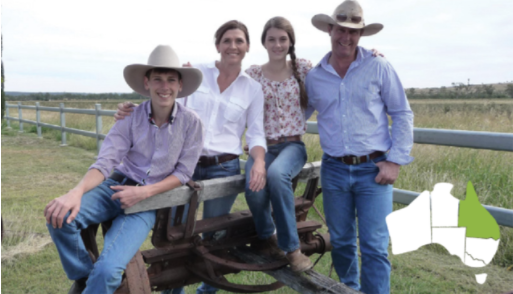Rotational grazing boosts soil, pasture health, raises productivity
by Eleanor @ Framework,

Theme: Environmental stewardship
Priority: Improve land management practices
Producer: Peter, Simone, Brooke and Ty Lawrie
Location: Rockhampton, central QLD
“The improvements have allowed us to double our carrying capacity…whilst still increasing soil and pasture health.”
KEY POINTS
- More paddocks, water points keep stock on the move
Improvements to land management practices have enabled central Queensland beef producers Peter, Simone, Brooke and Ty Lawrie to double carrying capacity over a five-year period, whilst still increasing soil and pasture health.
An increase in paddock numbers and additional watering points has allowed the Lawrie family to utilise more land and rest paddocks to allow the rejuvenation of pastures and more control of grazing management on its 1600ha property, “Montevideo”.
The improvements to land management started in 2007 when the family converted to a rotational grazing system, consisting of 36 paddocks and 14 troughs. All fencing is single wire electric with an average paddock size of 47ha.
“Our enterprises consist of 1600ha rotational grazing (managed by Peter), 80ha of irrigated leucaena and a further 3180ha of grazing land that we lease out,” says Peter Lawrie. “The improvements have allowed us to double our carrying capacity over a five-year period, whilst still increasing soil and pasture health.”
Prior to starting this development creek systems were fenced off on “Montevideo” as part of a Fitzroy Basin Neighbourhood Catchment Programme.
“Another of our enterprises consists of 80ha of irrigated leucaena, managed by Simone,” says Peter. This enterprise, “Esher”, consists of 20 paddocks and one central water point. The average paddock size on this property is 4ha, stock are rotated on a regular basis, with stocking rates reaching up to 113hd/ha. High density impact on this property continues to lift carry capacity and pasture growth to new levels.
Categories: Environmental stewardship